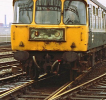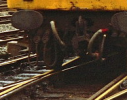GS250
Member
- Joined
- 18 Mar 2019
- Messages
- 1,025
Also includes DEMU's too.
Can think of 2x4 car units that ran on the Marylebone peak hour services. Also...I believe there are 3x3 car formations that run from Waterloo to Exeter on some busier days. 2x5 Hastings units possibly the longest?
Was there ever anything over over 10?
Can think of 2x4 car units that ran on the Marylebone peak hour services. Also...I believe there are 3x3 car formations that run from Waterloo to Exeter on some busier days. 2x5 Hastings units possibly the longest?
Was there ever anything over over 10?


